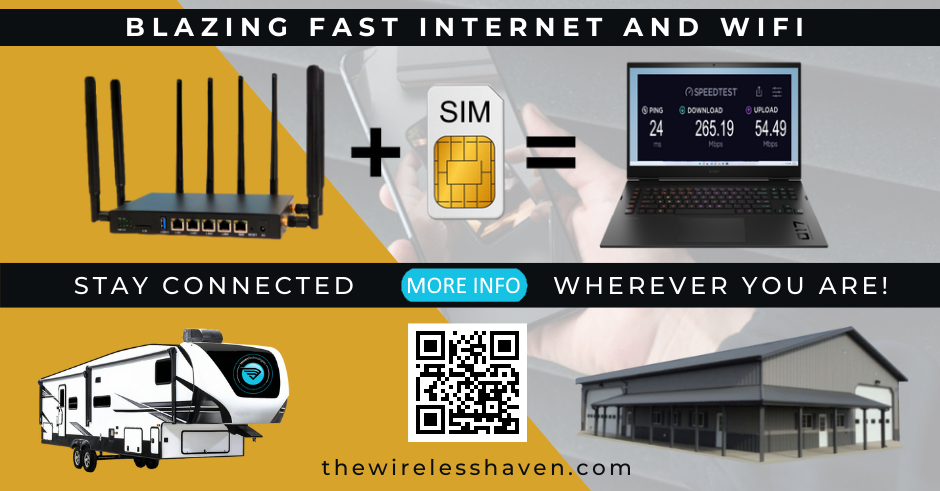Antenna Match?
Forum rules
Use the SEARCH function for related issues PRIOR to posting for assistance.
Use the SEARCH function for related issues PRIOR to posting for assistance.
- Didneywhorl
- Posts: 3662
- Joined: Fri Mar 23, 2018 5:37 pm
- Location: USA
- Has thanked: 1379 times
- Been thanked: 770 times
- Contact:
Re: Antenna Match?
Clarify what you mean by not matching. Meaning each antenna be the same identical antenna?
If so, then you only really need to look to the particular modems Hardware design documents.
The antenna ports are designed to work within a particular frequency range, per port and pair. The modem has zero way to know that one antenna port has a different antenna from the other. The design is created for the end user to follow it, not the other way around.
So what happens is the modem gets two different antennas (say one small indoor omnidirectional [700-2700MHz] and one big parabolic grid outdoors [600-6000MHz] ) and the modem goes to work. It starts to transmit generally across both ports with zero regard for what is attached.
It scans and sees that B46 is available (5200MHz), because the big parabolic outside is rated for that band and is really strong. So it says according to our modem algorithms I am connecting to B46. It then goes to transmitting and receiving on B46. The other antenna essentially is lost, not only does it not physically get the signal because it's small and indoors and B46 doesn't penetrate walls or go very far from the origin point, but the little omni isn't even rated to use that frequency. The modem, though, is just pushing its communication out, split between the two ports, and usually the TX side (upload) is on one port or the other. So it's possible the small omni is getting all, or nearly all, of the upload traffic and can't send a thing. The modem though thinks overall we're still good, because it is receiving data from the the tower.
If you were connecting to a band that both antennas could see (say a low band like B12 [~700MHz]) and transmit to and fro, then you may feel like its working good. Half of your signal would BARELY be getting to and from, and the modem is none the wiser as to why the signal quality is so trashy.
I could keep going, but you get the point. This is an extreme example, but it highlights the reasons why mismatched antennae are a bad idea.
Will it work, though? Yes. Should you do it anyway? It depends.
Are you doing it because there is no other way to get signal and you just can't afford a second antenna? Then do it.
Are you doing it because you are being cheap and would rather spend the money on something else? That's up to you, not me, but now you know what effect it has on the system.
If so, then you only really need to look to the particular modems Hardware design documents.
The antenna ports are designed to work within a particular frequency range, per port and pair. The modem has zero way to know that one antenna port has a different antenna from the other. The design is created for the end user to follow it, not the other way around.
So what happens is the modem gets two different antennas (say one small indoor omnidirectional [700-2700MHz] and one big parabolic grid outdoors [600-6000MHz] ) and the modem goes to work. It starts to transmit generally across both ports with zero regard for what is attached.
It scans and sees that B46 is available (5200MHz), because the big parabolic outside is rated for that band and is really strong. So it says according to our modem algorithms I am connecting to B46. It then goes to transmitting and receiving on B46. The other antenna essentially is lost, not only does it not physically get the signal because it's small and indoors and B46 doesn't penetrate walls or go very far from the origin point, but the little omni isn't even rated to use that frequency. The modem, though, is just pushing its communication out, split between the two ports, and usually the TX side (upload) is on one port or the other. So it's possible the small omni is getting all, or nearly all, of the upload traffic and can't send a thing. The modem though thinks overall we're still good, because it is receiving data from the the tower.
If you were connecting to a band that both antennas could see (say a low band like B12 [~700MHz]) and transmit to and fro, then you may feel like its working good. Half of your signal would BARELY be getting to and from, and the modem is none the wiser as to why the signal quality is so trashy.
I could keep going, but you get the point. This is an extreme example, but it highlights the reasons why mismatched antennae are a bad idea.
Will it work, though? Yes. Should you do it anyway? It depends.
Are you doing it because there is no other way to get signal and you just can't afford a second antenna? Then do it.
Are you doing it because you are being cheap and would rather spend the money on something else? That's up to you, not me, but now you know what effect it has on the system.
Re: Antenna Match?
I don't plan on trying this, was just curious how it would work. Sounds like a bad idea.
Thanks!
Thanks!
- These users thanked the author dbshelton for the post:
- Didneywhorl (Mon Oct 25, 2021 11:25 am)


